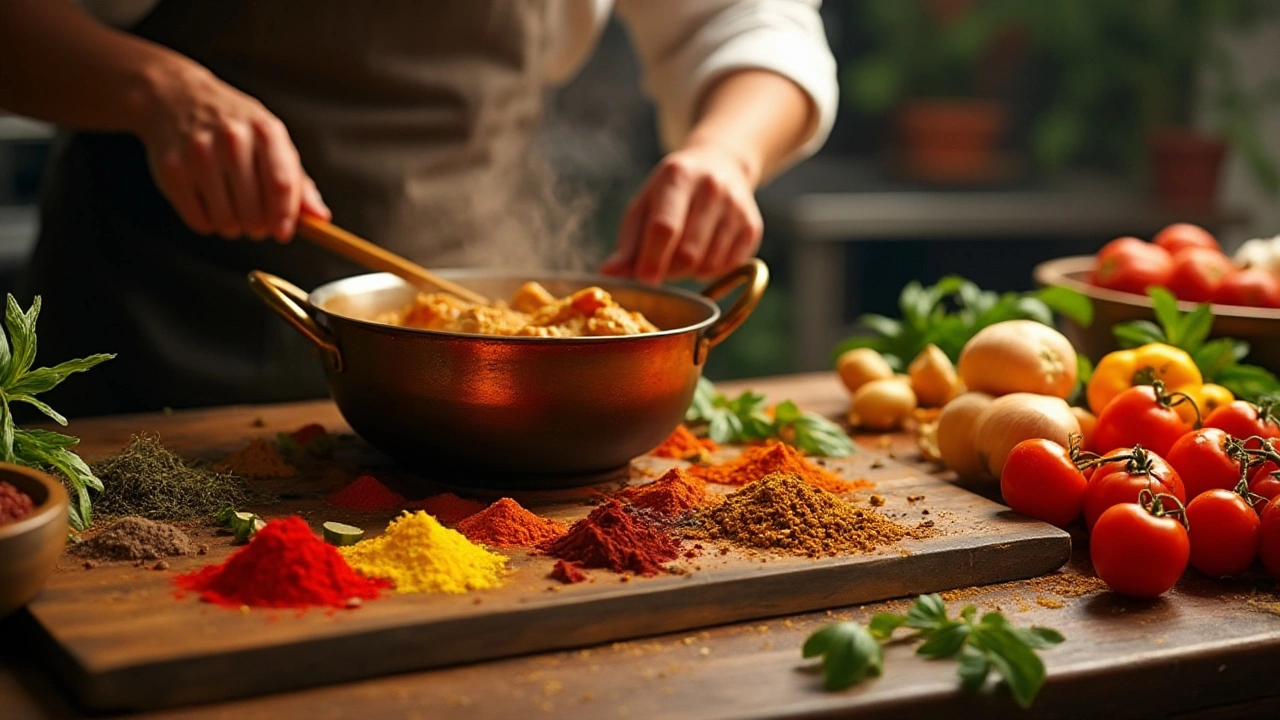Simmer Curry – Master the Gentle Cooking Method for Rich Indian Flavors
When you hear simmer curry, a cooking method where the sauce stays just below a rolling boil, allowing flavors to meld over low heat. Also known as slow simmer, it lets spices release gradually without scorching, giving the dish a deep, balanced taste.
Every great simmer curry starts with the right curry ingredients, a blend of spices, aromatics, and base liquids that define the dish’s character. Typical staples include cumin, coriander, garam masala, ginger, and garlic, but the real magic happens when you layer them in stages. First you toast whole spices, then you add onions until they turn golden, followed by ground powders that bloom in the oil. This sequence creates a flavor foundation that can stand the long, gentle heat of a simmer without turning bitter.
One of the most coveted results of a creamy curry, a sauce enriched with dairy, coconut milk, or nut pastes that adds silkiness and richness is achieved during the simmer stage. Adding a splash of full‑fat yogurt, cream, or coconut milk after the spices have opened up prevents curdling and lets the sauce thicken naturally. The low heat gives the fats time to emulsify, so you end up with a velvety mouthfeel that coats each bite. Tip: keep the pot partially covered to retain moisture, but stir occasionally to avoid a skin forming on top.
What if you run out of turmeric or want a different color? A turmeric alternative, substitutes like saffron, paprika, or ground fenugreek that provide warmth without the bright yellow hue works beautifully in a simmer. These alternatives contribute their own aromatic notes while still benefiting from the slow heat. For example, a pinch of fenugreek adds a subtle bitterness that deepens the sauce, and saffron’s floral aroma lifts the dish without overwhelming other spices. The key is to add these substitutes early so they have time to infuse.
The age‑old debate about tomatoes in curry, using fresh or canned tomatoes as a tangy base that can brighten or dominate a sauce also hinges on simmering. If you love a bright, slightly acidic profile, add chopped tomatoes after the onions have softened and let them cook down for 10‑15 minutes before lowering the heat. The simmer will break down the fruit’s raw edge and meld it with the spice blend. If you prefer a richer, less tangy sauce, skip the tomatoes altogether or use a smaller amount, letting the simmer bring out the sweetness of the onions and the depth of the spices.
Key Elements for a Perfect Simmer Curry
To nail the technique, keep these checkpoints in mind: 1) Use a heavy‑bottomed pot that distributes heat evenly, 2) Control the temperature so the liquid barely bubbles, 3) Layer spices as described, 4) Add creamy elements near the end, and 5) Adjust acidity with tomatoes or a splash of lemon only after the sauce has settled. Following this roadmap turns a simple mixture of pantry staples into a restaurant‑quality curry that stays juicy and fragrant for hours.
Now that you know how the simmer method ties together spices, creamy bases, turmeric swaps, and tomato choices, you’ll spot the patterns in the articles below. Whether you’re fixing a quick weeknight dinner or perfecting a weekend feast, the tips in the upcoming posts will give you concrete steps to apply this gentle cooking style to any Indian curry you crave.

Perfecting Chicken Curry: Simmering Times and Tips
Discover the ideal simmering time to achieve a rich and flavorful chicken curry. This guide explores the art of cooking curry, with tips to enhance texture and taste. Learn about the best ingredients and methods to unlock deliciousness. Whether you're a seasoned chef or a novice, these insights will elevate your curry-making skills.